Key in a search term below to search our website.
Key in a search term below to search our website.
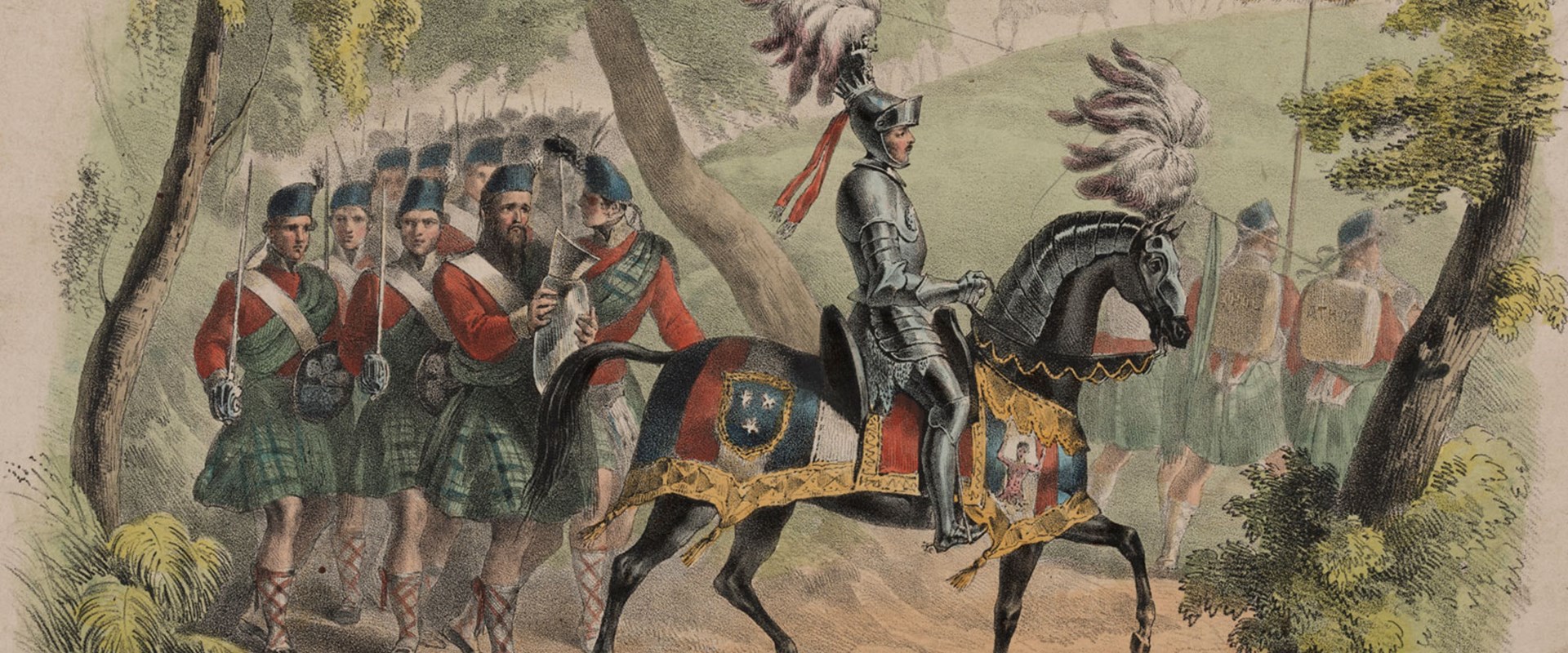
In August 1839, Lord Eglinton held a mock-medieval tournament at his estate in North Ayrshire, Scotland.
As part of our summer exhibition Wild and Majestic: Romantic Visions of Scotland we have a number of objects on display from the Eglinton tournament. Step onto the battlefield and discover more about this flamboyant festival here.
Although the tournament was planned as real sporting event, it was essentially a re-enactment. However, there was a genuine attempt at historical accuracy by the organisers, competitors and spectators of the event.
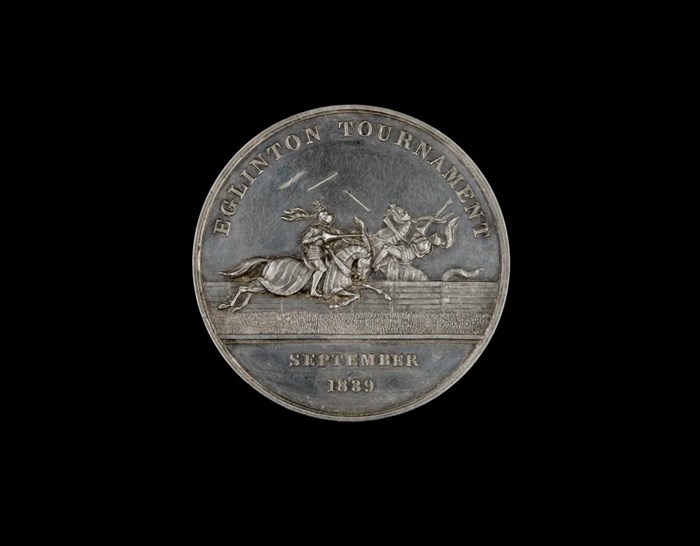
Above: Commemorative medal of the Eglinton tournament.
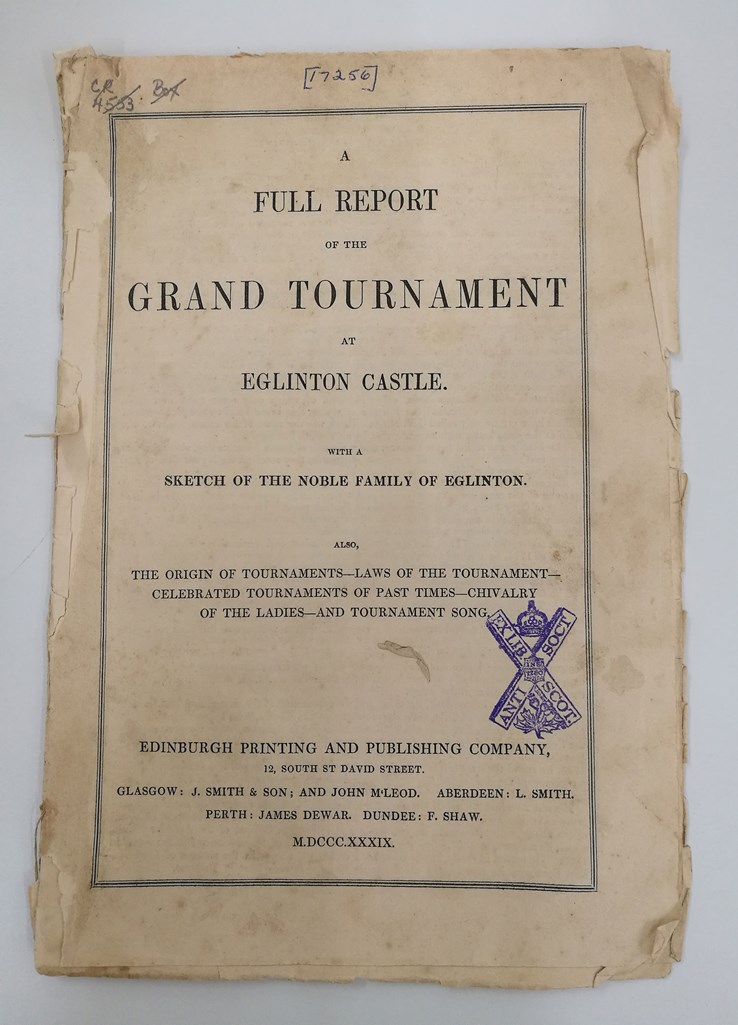
Above: A Full Report of the Grand Tournament at Eglinton Castle (Edinburgh: Edinburgh Printing and Publishing Company, 1839).
When the event was being planned the organisers had to decide what type of tournament they would host. Tournaments had come in many shapes and forms throughout history and some versions would have been too dangerous to stage.
The form that the tournament took was a 16th-century ‘Triumph’ whereby knights on horseback attempted to strike each other’s shields by tilting with lances. It was agreed that a pitched battle, or mêlée, would be too dangerous, although a small mêlée was held at the end of the third day between two teams of four knights. Lord Eglinton had been warned by the Sheriff of Ayr that if anyone was killed during the tournament the guilty party would be charged with manslaughter, or even murder.
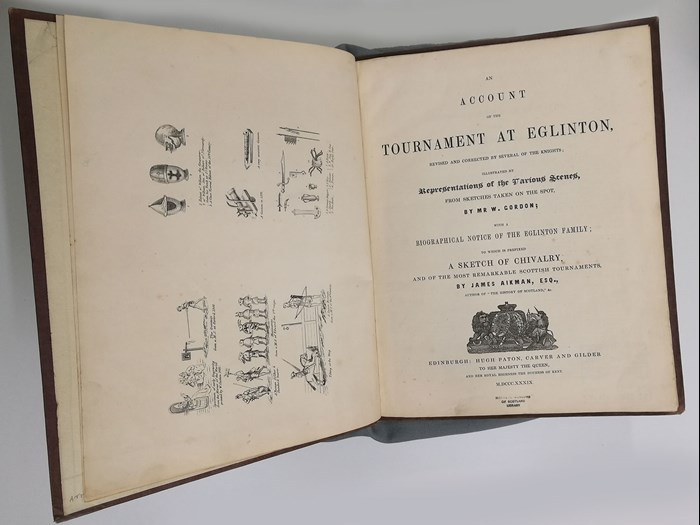
Above: James Aikman & W. Gordon, An Account of the Tournament at Eglinton (Edinburgh: Hugh Paton, 1839).
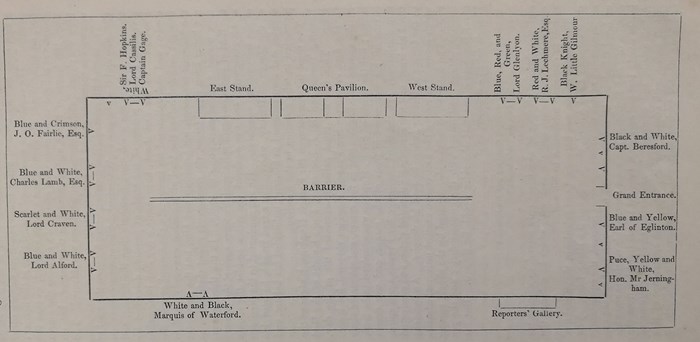
Above: Plan of the tilting ground.
The knights were only allowed to joust with the lances provided by Lord Eglinton, which he had specially commissioned. These lances were designed to break on impact to avoid serious injury and were based on the type of lances that were used in 16th-century jousts. Two of these lances are on display within the exhibition, as well as a glove that had been given as a ‘favour’ by Anne Home-Drummond to attach to the lance of her husband-to-be, Lord Glenlyon.
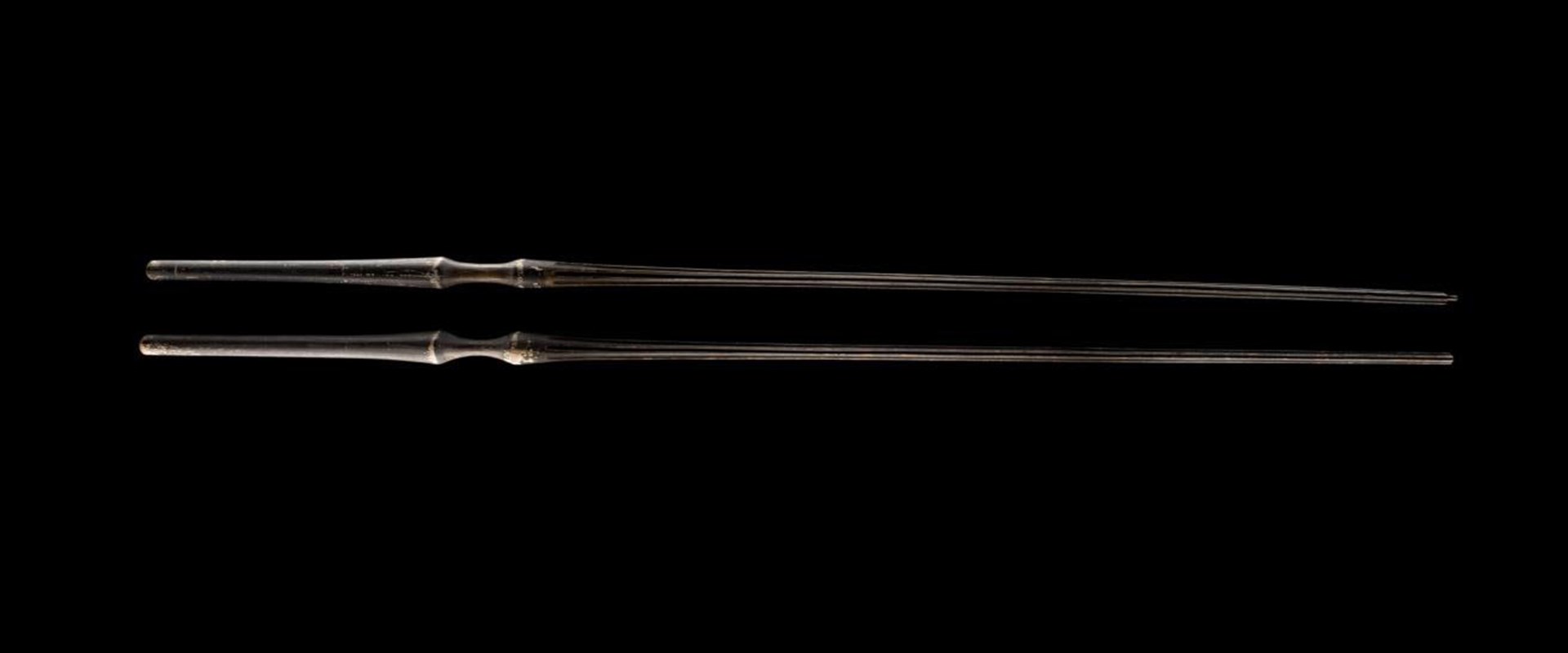
Tilting lances used in the Eglinton tournament.
The knights also had to follow the rules of the tournament dictating where they could strike their opponent. The rules of the tournament were based on a set written in 1602 by Norroy King of Arms. These rules would have been used in jousts held during the reign of Queen Elizabeth I of England. However, the Eglinton rules also took elements from those written in 1465 by the Earl of Worcester for Edward IV of England. The only change to the original rules was that it was forbidden to hit your opponent’s helmet.
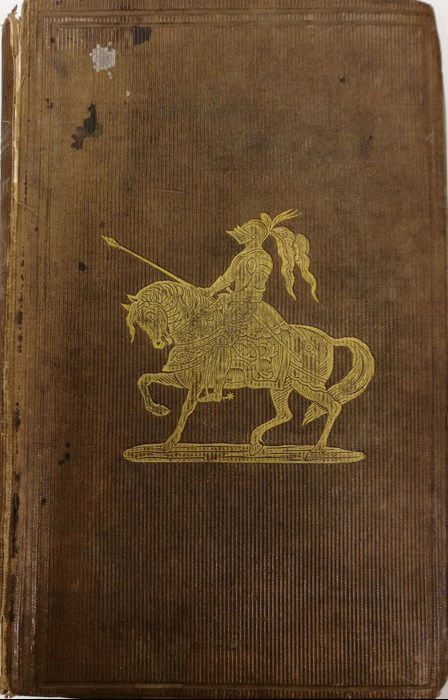
Above: Front cover showing a knight on his horse from Peter Buchan, The Eglinton Tournament and gentleman unmasked (London: Simpkin, Marshall & Co, 1840).
Antiques-dealer Samuel Luke Pratt played a huge part in organising the armour and outfits for the tournament. Pratt had a collection of antique armour that he displayed and sold at his shop in Bond Street in London. He had an in-depth knowledge of armour and weapons and brokered the purchases of armour for the knights who were competing in the event.
Later in his career, Pratt was found to have sold several fake articles of armour, but for the Eglinton tournament he appears to have been selling genuine pieces. Only one of the suits of armour that was used in the Eglinton tournament (now in the Royal Collection) has been identified as a 19th-century fake.
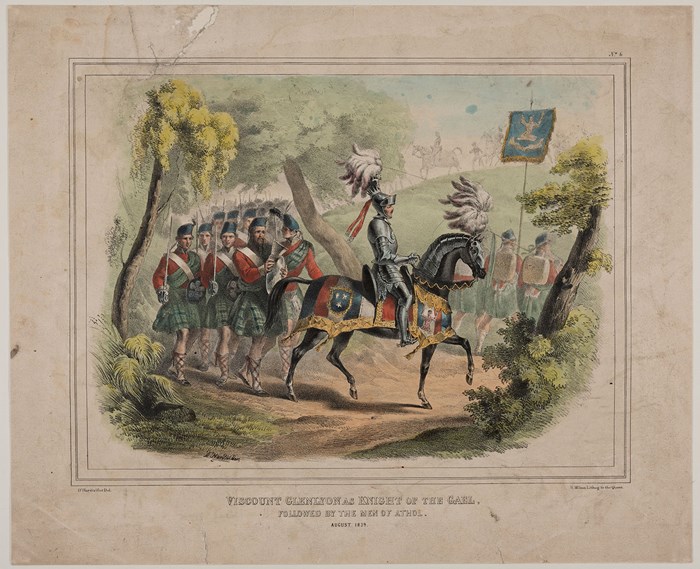
Above: Lithograph of Viscount Glenlyon as the Knight of the Gael with his retinue of Atholl Highlanders.
The armour worn by Viscount Glenlyon is dated c.1560 and is from Germany. It has remained within the collection of the Dukes of Atholl and is normally on display at Blair Castle. The helmet and gauntlet have been loaned to the museum for this exhibition. Most of the armour worn at the tournament was sourced from Europe, while a few knights wore armour from their family collections. The illustrated account of the tournament by John Henderson and James Henry Nixon provides details of the different European collections that armour was purchased from.
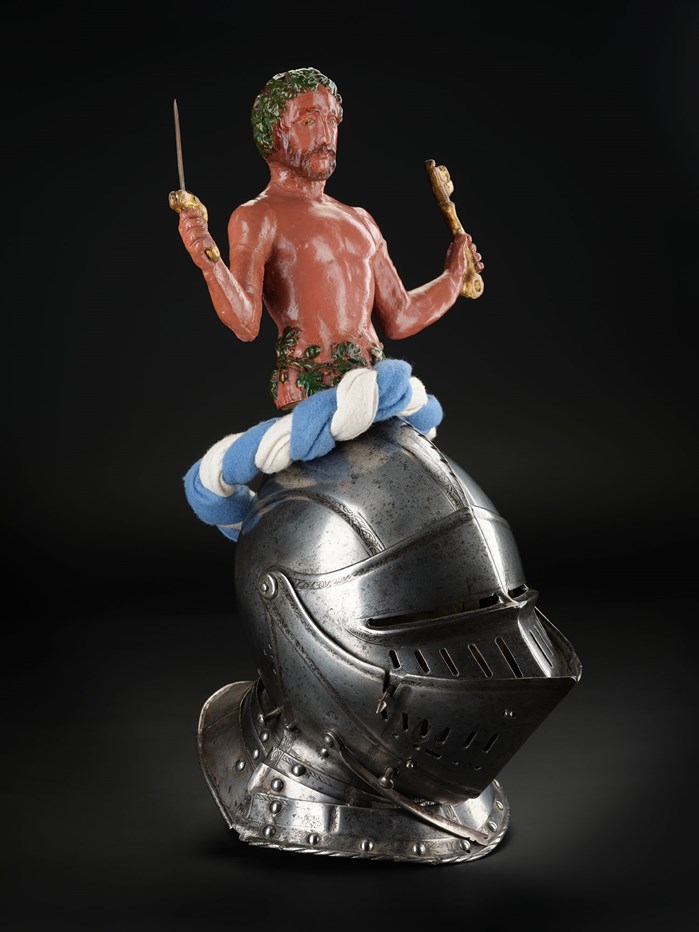
Above: Helmet and ‘Wild man of Atholl’ crest worn by Viscount Glenlyon at the Eglinton tournament as the ‘Knight of the Gael’, from the collection at Blair Castle, Perthshire.
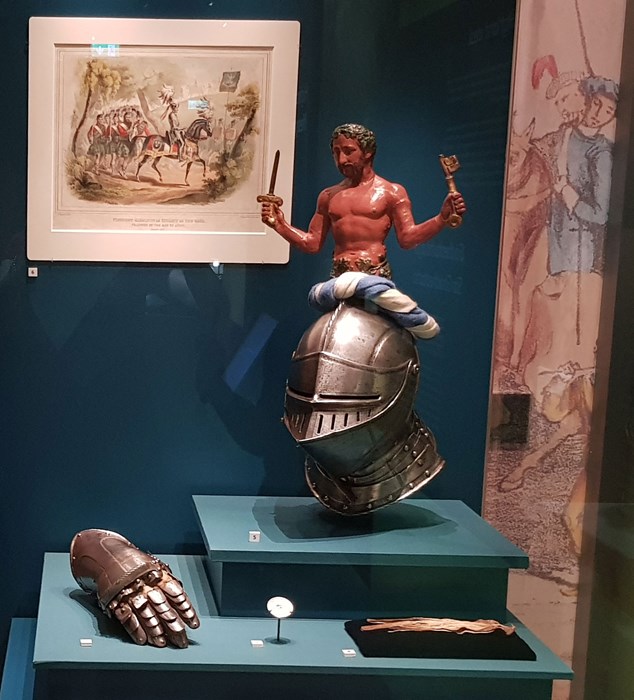
Above: The gauntlet and helmet worn by Viscount Glenlyon at the Eglinton tournament, on display in the Wild and Majestic exhibition at the National Museum of Scotland.
Viscount Glenlyon had his Atholl Highlanders dressed in traditional Highland dress for the tournament. The outfits were not medieval in style but were based on 18th-century regimental uniforms. Glenlyon purchased these outfits from Pratt along with enough claymores, targets, dirks and pistols for his retinue. For the other knights, Pratt ordered over four hundred uniforms from Messrs Haigh, theatrical costumers based in Covent Garden in London. These costumes were exactly copied from portraits or medieval manuscripts to give the event some degree of historical authenticity.
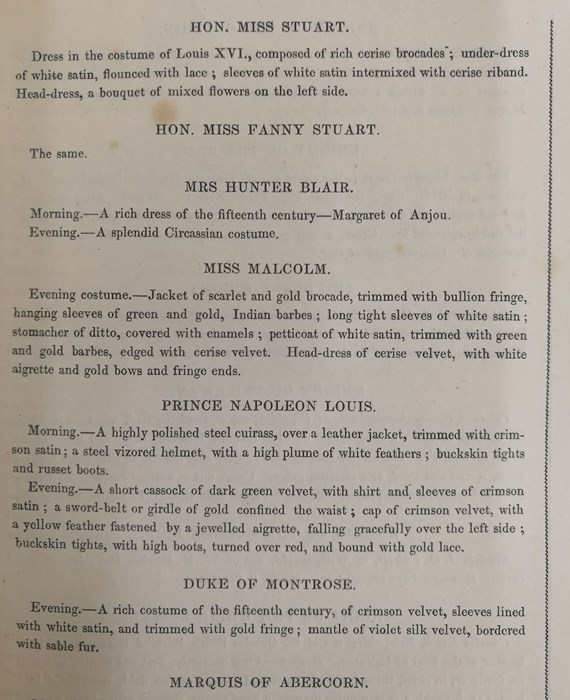
Above: Excerpts from An Account of the Tournament at Eglinton describing some of the outfits worn by the guests.
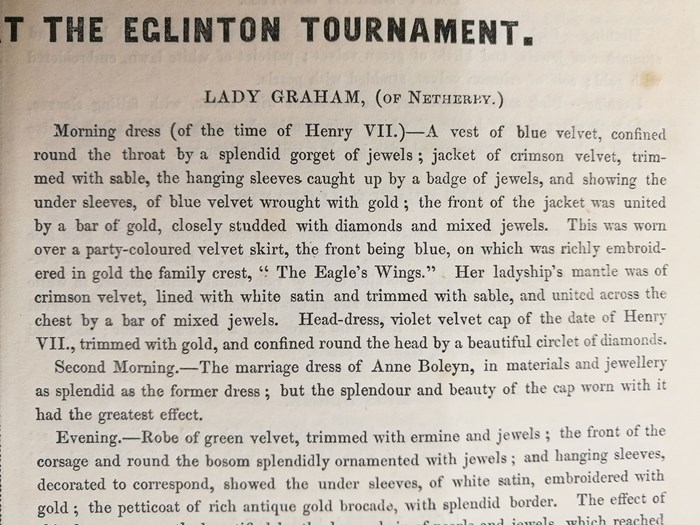
Above: Excerpts from An Account of the Tournament at Eglinton describing the outfits of Lady Graham.
Even the spectators strove to dress in authentic costumes. The various accounts list the outfits that both men and women wore during the event with inspiration coming from a range of historical periods. One spectator, Lady Graham of Netherby, wore a copy of the marriage dress of Anne Boleyn, while Mrs Hunter Blair’s outfit was based on one worn by Margaret of Anjou.
Of Lord Eglinton’s close acquaintances:
“The fancy costumes were chiefly of the reigns of Henry VIII. and Elizabeth. One gentleman we observed in the court dress of James the First [of England]. Not a few were attired in Spanish, Prussian, and old French costumes.- James Aikman & W. Gordon, An Account of the Tournament at Eglinton
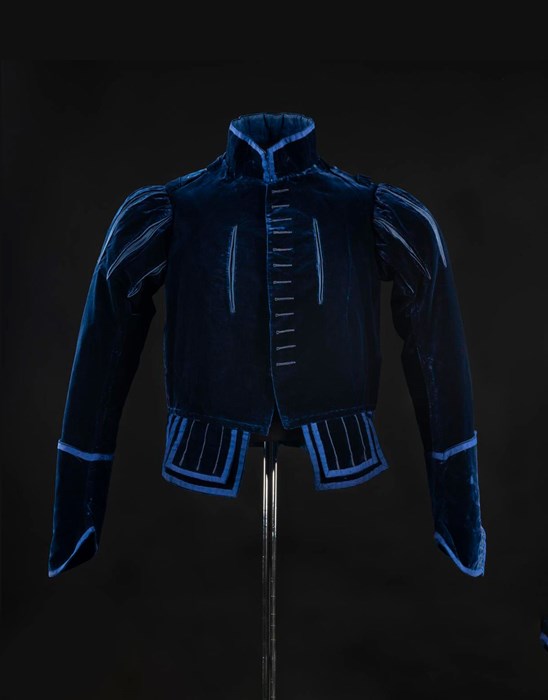
Above: Medieval doublet of Ranald George Macdonald, 20th chief of Clanranald, similar to those worn at the banquet and ball at Eglinton.
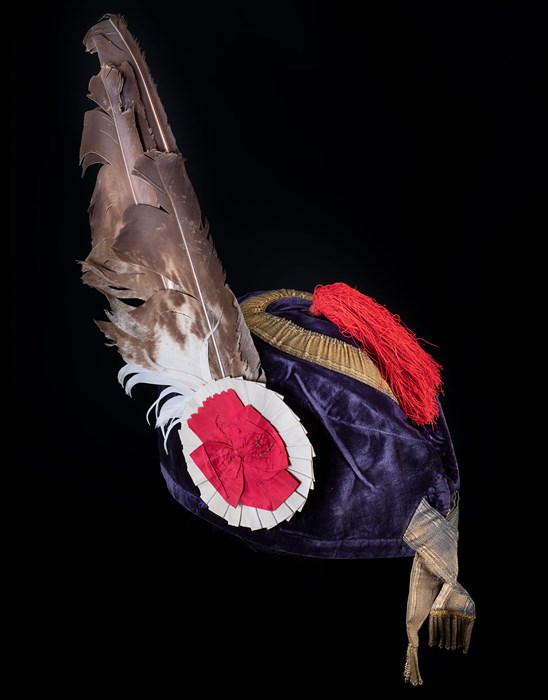
Above: Blue velvet Glengarry bonnet belonging to Ranald George Macdonald, similar to costumes worn at the Eglinton tournament ball.
Unfortunately, the event was at the whim of the Scottish weather. The tournament was meant to run for four days, yet torrential rain on the first day ruined many people’s costumes, caused armour to rust and turned the field into a muddy quagmire making it difficult to joust. Knights in full armour carrying umbrellas looked comical and the expensive outfit of the Queen of Beauty, Lady Seymour, could hardly be seen in her covered tent. To top it off, the marquees were completely flooded meaning the planned banquet and ball had to be cancelled.
There were no jousts on the second day while repairs were made to the tents, and armour was polished and fixed. On the third day the sun came out, so the knights could joust and stage a mock-battle in better conditions.
The finishing touch to the tournament, postponed until the third day thanks to the weather, was a huge medieval banquet and ball for 400 guests, with food served on a specially commissioned gold and silver dinner service. Guests were dressed in medieval outfits and served period dishes including boars’ heads, pots of swan, peacock pie and turtle. Unfortunately, the 19th-century diners found the food quite inedible! But they did enjoy the medieval drinks of malmsey and posset and danced the night away accompanied by costumed minstrels at the ball.
As with all re-enactments, there was a generous helping of imagination at the Eglinton tournament. However, it was not just romantic fancy that inspired the organisers and guests of the event, but a genuine interest in the medieval past and the desire to experience a real tournament.